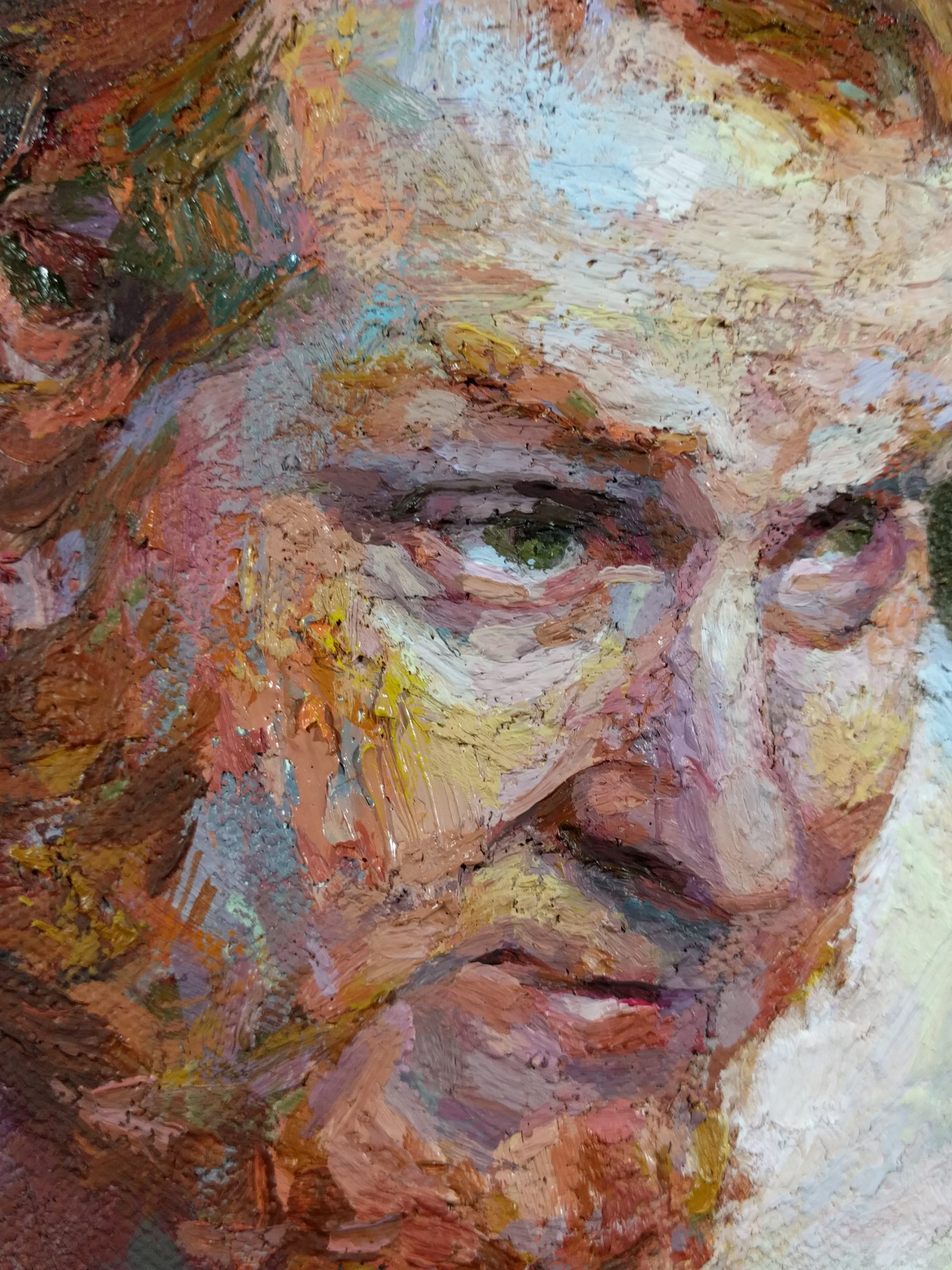How Figurative Oil Painting Changes Standard Artistic Expression
How Figurative Oil Painting Changes Standard Artistic Expression
Blog Article
The Duty of Feeling and Expression in Figurative Oil Painting: An In-Depth Evaluation of Subject and Composition
The interaction of emotion and expression in metaphorical oil painting works as an important lens with which one can examine the detailed connection in between subject and composition. Artists harness numerous strategies, from shade option to brushstroke dynamics, to grow psychological resonance within their works. This nuanced orchestration not just forms visitor understanding yet likewise welcomes a much deeper query into just how these aspects coalesce to reflect the intricacies of human experience. As we discover this abundant terrain, one have to think about exactly how specific study brighten the wider implications of these artistic choices.
Recognizing Feeling in Art
Emotion in art acts as a powerful avenue for expression, enabling musicians to convey complicated feelings via their work. In figurative oil paint, this psychological deepness is often portrayed via the depiction of the human figure, recording the nuances of human experience. The option of topic, color scheme, and brushwork all add to the emotional resonance of an item.
Artists regularly bring into play personal experiences, societal problems, or global motifs to evoke feelings in the customer. As an example, a portrait may reflect vulnerability, while a dynamic figure in movement can signify liberty or turmoil. These psychological strings link the visitor to the art work, cultivating a discussion that transcends the aesthetic tool.
Additionally, the interplay between light and darkness can amplify psychological intensity, guiding the customer's stare and accentuating specific aspects within the make-up. Using structure in oil painting better includes layers of complexity, welcoming a tactile action that improves the emotional experience. Generally, recognizing emotion in art is crucial for appreciating the nuances that identify metaphorical oil painting, as it transforms mere representation right into a profound exploration of the human problem.
Trick Elements of Structure
In the world of metaphorical oil paint, the make-up acts as the underlying framework that organizes visual aspects and enhances the emotional narrative. Necessary components of composition include equilibrium, comparison, focal point, and rhythm, each adding to the overall effect of the art work.
Balance describes the distribution of visual weight within the painting, which can be achieved via asymmetrical or in proportion setups. A well-balanced composition offers security, allowing the customer to involve with the piece harmoniously - figurative oil painting. Contrast, on the various other hand, includes juxtaposing different components, such as light and dark or cozy and trendy shades, to guide the visitor's eye and stimulate psychological feedbacks
The centerpiece is essential, as it directs attention to the most substantial part of the painting, often highlighting the emotional core of the story. With techniques like shade saturation or placement, musicians can emphasize this area efficiently. Lastly, rhythm pertains to the repetition of elements, developing a feeling of movement and circulation throughout the structure. By skillfully integrating these crucial elements, artists can craft engaging and emotionally resonant metaphorical oil paintings that captivate and involve their target market.
Subject and Its Influence
Topic plays a crucial duty in metaphorical oil paint, as it not just serves as the structure for the narrative but likewise forms the visitor's analysis and psychological engagement with the art work. The choice of subject issue-- be it a singular number, a team dynamic, or a thematic representation-- directly influences the psychological ambience conveyed to the audience.

As an example, pictures commonly evoke personal links, disclosing the details of human expression and character, while scenes depicting public tasks can create a sense of belonging or nostalgia. In addition, the social and historical context of the subject improves the customer's understanding, triggering much deeper reflections on social norms, values, and the human problem.
Various subjects also produce varying degrees of interaction; a significant conflict portrayed via figures in tension might generate sensations of stress and anxiety or compassion, while serene landscapes can invoke tranquility and reflection. Eventually, the impact of subject issue in metaphorical oil paint is profound, as it acts as a channel for psychological resonance, leading the viewer's feedback and analysis, and fostering a connection in between the official source artwork and the viewer. This interaction is vital for the successful communication of the musician's intent.
Strategies for Evoking Sensations
The effectiveness of figurative oil paint in sharing emotions is dramatically influenced by the strategies used by the artist. One of the most vital techniques is the use of shade concept, where the tactical choice of hues can stimulate specific emotional feedbacks. Cozy shades, such as reds and oranges, usually evoke feelings of passion or hostility, while cooler tones like blues and eco-friendlies often tend to stimulate peace or unhappiness.
Another necessary technique is the adjustment of light and shadow, recognized as chiaroscuro. This technique enhances the three-dimensionality of numbers, developing dramatic contrasts that can escalate emotional depth. The positioning of light can guide read the article audiences' feelings, highlighting details components of the structure.
Brushwork also plays a crucial function; loose, meaningful strokes can share energy and spontaneity, whereas smoother strategies might recommend tranquility or precision. Additionally, the setup of topics within the structure can affect emotional influence. Close closeness can suggest intimacy, while range might suggest isolation.
Eventually, the mix of these methods makes it possible for musicians to craft narratives that resonate with the customer, changing a mere aesthetic experience into an expressive psychological journey. - figurative oil painting

Study of Significant Works
Analyzing noteworthy works of figurative oil painting exposes just how numerous strategies are used to evoke effective feelings. One excellent situation is Edvard Munch's "The Scream," where the distorted figure and swirling background share existential dread. Munch's usage of color-- deep blues and brilliant oranges-- heightens the emotional impact, showcasing exactly how combination options can shape customer experience.
An additional significant work is Pablo Picasso's "Les Demoiselles d'Avignon." Right here, fragmented types and bold brushstrokes reflect a troubled psychological landscape, testing standard depictions of the women figure. Picasso's ingenious structure not only captures the audience's focus but likewise welcomes reflection on themes of identity and sexuality.
Furthermore, Frida Kahlo's "Both Fridas" offers a poignant exploration of duality and self-identity. The contrasting figures, linked by a common heart, exhibit important source Kahlo's emotional depth and personal story. figurative oil painting. Her meticulous focus to information and symbolic aspects offer to engage viewers on a natural level
These study underscore the extensive link between emotion and structure in figurative oil painting, exposing just how artists harness technique to interact complicated feelings and stories that resonate across time and society.

Conclusion
In final thought, the interplay of feeling and expression in metaphorical oil paint dramatically boosts the viewer's experience and interpretation of the artwork. With a mindful selection of subject matter and compositional methods, musicians communicate extensive stories that reverberate on both universal and personal levels. The application of color theory, chiaroscuro, and brushwork further amplifies psychological depth, transforming each canvas right into a powerful reflection of the complexities of the human experience.
In metaphorical oil painting, this emotional deepness is often depicted through the representation of the human number, recording the nuances of human experience.Furthermore, the interaction in between light and shadow can amplify psychological intensity, leading the visitor's stare and drawing interest to certain elements within the structure. The usage of structure in oil paint better includes layers of intricacy, welcoming a responsive response that enhances the psychological experience.The focal factor is essential, as it directs focus to the most considerable component of the paint, typically highlighting the psychological core of the story. Ultimately, the impact of subject issue in metaphorical oil paint is profound, as it serves as a channel for emotional vibration, guiding the customer's feedback and analysis, and promoting a link in between the art work and the viewer.
Report this page